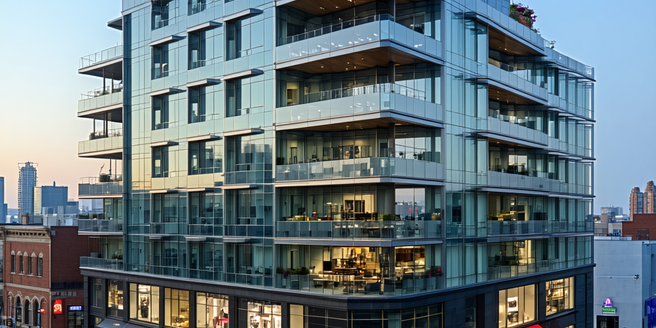Rent Prices And Gentrification Dynamics

Understanding the Basics of Gentrification
Gentrification is a complex process where urban neighborhoods undergo transformation often driven by an influx of middle to high-income residents. This dynamic typically leads to the renovation and upgrading of housing and infrastructure, but it also can displace long-standing communities. Understanding gentrification involves exploring the socio-economic mechanisms that attract new investments while considering the cultural and demographic shifts that follow. It’s essential to recognize the balance between growth and community preservation. Residents, policymakers, and developers all play roles in how these changes unfold. Gentrification can rejuvenate neglected areas, yet the challenge lies in managing these changes in a way that remains inclusive and equitable. Awareness of its implications is crucial for fostering sustainable urban developments.
The Impact of Increased Rent Prices on Communities
As gentrification progresses, it often results in rising rent prices, a phenomenon significantly impacting local communities. Long-term residents, particularly those with fixed or lower incomes, may struggle to cope with escalating housing costs. This spike in rent can lead to displacement, forcing individuals and families to relocate to more affordable areas, thereby altering the community fabric. Additionally, local businesses might face increased operational costs, threatening their survival. The alteration in demographics and community landscapes can erode cultural identity and heritage, raising concerns about economic diversity and social cohesion. It’s essential for city planners to implement policies that protect vulnerable populations while supporting responsible development that equitably benefits all residents.
Historical Trends in Gentrification and Rent
Historically, gentrification and its consequences on rent prices have shown patterns reflective of larger economic and social trends. From post-industrial city shifts in the 1970s to the tech-driven booms in the early 21st century, the factors initiating gentrification vary yet often revolve around economic opportunities and urban renewal policies. These trends reveal the cyclical nature of urban development, where investment influx leads to heightened demand and subsequently increased property values. Throughout history, these changes have consistently influenced the socio-economic makeup of neighborhoods, often catalyzing discussions on equity and displacement. Understanding these past trends is crucial for anticipating future patterns and implementing strategies that mitigate negative impacts while encouraging healthy urban evolution.
How Gentrification Affects Local Economies
Gentrification can have both positive and negative effects on local economies. On one hand, it may bring increased economic activity, revitalize underdeveloped areas, and improve local infrastructure. The influx of wealthier residents can also lead to higher tax revenues, allowing for greater public investment in community services. However, these benefits often come with challenges. Small, locally-owned businesses may face pressure from increased rent and competition from larger chains attracted to the area. If not managed carefully, gentrification could lead to economic homogenization and loss of unique cultural identity. Balancing these aspects is crucial to ensure that economic growth does not exclude existing communities but instead builds an inclusive prosperity.
Strategies to Mitigate Adverse Effects of Gentrification
To mitigate the adverse effects of gentrification, it is critical to adopt a series of inclusive and forward-thinking strategies. Implementing affordable housing policies is at the forefront of these efforts, ensuring that long-term residents have access to housing within gentrifying areas. Community engagement initiatives are equally vital, empowering residents to participate in decision-making processes about developments that impact them. Economic strategies might include supporting small businesses through subsidies or incentives to maintain the local economic landscape. Urban planning should incorporate mixed-use developments that cater to diverse income levels. Policy interventions that protect renters’ rights and control speculative practices in housing markets also form an essential element of these strategies, fostering an urban environment where growth is balanced with equity.
Future Predictions: Rent Prices and Urban Development
As cities continue to evolve, future predictions for rent prices and urban development hinge on various global and local factors. Increasing urbanization, climate change, and technological advancements will significantly shape these dynamics. Rent prices are likely to remain a critical issue, responding to market demands and economic conditions. Some forecasts suggest a move towards more sustainable urban planning practices, emphasizing affordable housing and inclusive community development. Policymakers may need to adopt innovative solutions, like smart city technologies or public-private partnerships, to accommodate growing populations while managing rent affordability. Ultimately, the future of urban areas will depend on how effectively diverse stakeholders collaborate in creating environments that are both economically vibrant and socially inclusive.